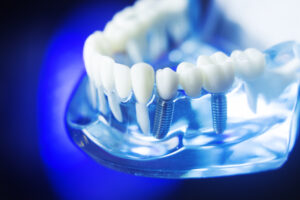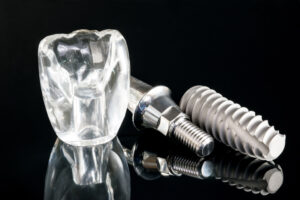After having a permanent tooth extracted by your dentist, the socket normally develops a blood clot to protect the socket. A dry socket occurs when this blood clot doesn’t form, or once it has formed, becomes dislodged. Without a blood clot, the nerves and the bone are exposed, and vulnerable to all foods, beverages, and bacteria in the mouth. A dry socket can result in severe pain that may radiate through the neck and face.
What Causes a Dry Socket After a Tooth is Removed?
There is no one-size-fits-all reason that some people develop dry sockets and others do not. It appears that women may be more susceptible to developing dry sockets than men. Oral contraceptive use may also increase the risk of developing dry sockets. Other potential causes include significant trauma during tooth extraction (such as impacted wisdom teeth removal), poor oral hygiene, or failure to heed post-surgical instructions. People who have experienced dry sockets previously may be more susceptible to developing the condition again.
Symptoms of Dry Socket
The primary symptom of a dry socket is pain at the extraction site. However, you may also notice that instead of a dark scab on the extraction site, the site looks white. This is because you’re seeing bone that should be covered by a scab. Other symptoms include tenderness, a bad taste in your mouth, and bad breath.
If you suspect you’ve developed a dry socket, you should book an appointment with your dentist as soon as possible. Although the condition may resolve on its own, it can be extremely painful. In the worst cases, the extraction site can become infected.
Your dentist will treat the socket with any combination of therapies such as rinsing and cleaning the socket, applying medicated gauze to the socket, and providing medication to treat the inflammation, pain, and any infection.
How to Prevent a Dry Socket After a Tooth Extraction
To prevent a dry socket after a tooth extraction, be sure to follow your dentist’s post-extraction guidelines. They will include instructions for promoting healing and may include recommendations for antibacterial mouthwash, gel, or medicated dressings.
Your dentist will also notify you of activities and foods to avoid. Activities and foods to avoid after a tooth extraction include:
If you suspect the extraction site is not healing properly, notify your dentist. They will provide instructions for caring for the site or schedule you for a check-up to prevent a dry socket from developing.
Schedule an Appointment for Tooth Pain in Monmouth County, NJ
Tooth pain can be treated without the need for tooth extractions in many cases. In other cases, tooth extractions will be necessary for orthodontic treatment, or because your mouth is not large enough to accommodate wisdom teeth. However, even severely damaged permanent teeth can often be treated with restorative dental treatments. If you’re ready to start your journey to better oral health with Dr. Richard Champagne and a truly collaborative and compassionate dental team, contact Champagne Smiles in Morganville, NJ today to schedule your first appointment.




